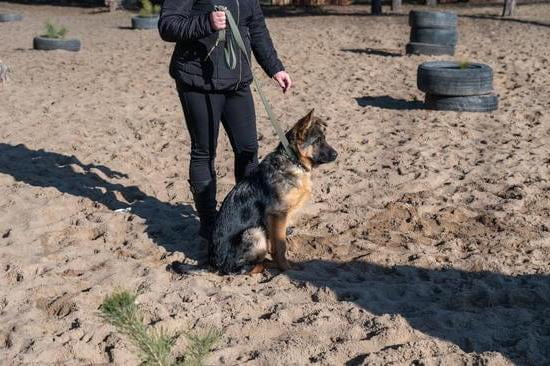When is it best to train a dog? Training a dog is a crucial aspect of responsible pet ownership, and it plays a significant role in ensuring the well-being of the dog and its owners.
Whether you have a new puppy or an adult dog, understanding the importance of training is essential for building a strong bond with your furry friend. In this article, we will explore the best time to start training a dog, from puppyhood to adulthood, as well as the different training techniques and schedules that can be implemented for effective results.
Puppyhood is widely considered as the best time to start training a dog, as it sets the foundation for good behavior and obedience throughout their life. It is during this stage that dogs are most receptive to new experiences and learning, making it easier to teach them essential commands and behaviors. However, training methods and schedules should also take into account the individual needs and characteristics of specific breeds or any potential behavioral issues that may arise.
As dogs enter their adolescent phase and eventually reach adulthood, they may face different challenges and opportunities for training. Understanding how to adapt training techniques and strategies according to their age and maturity level is crucial for continued success in obedience training. Additionally, determining the best time and frequency for training sessions can play a significant role in maintaining their progress and preventing any setbacks.
Throughout this article, we will delve into various aspects of training a dog at different stages of their life, as well as explore the ongoing benefits of consistent training for both dogs and their owners. So whether you are considering getting a new puppy or looking to improve your adult dog’s behavior, understanding the timing and methods for proper training is vital in creating a happy and well-behaved companion.
Puppyhood
Puppies are like sponges, eagerly soaking up information and experiences from the time they are born. This is why experts recommend starting training as early as 7-8 weeks of age. During this critical period, puppies are most receptive to learning and forming habits, making it the perfect time to introduce them to training.
One of the key aspects of puppyhood training is socialization. Exposing puppies to different people, animals, and environments at an early age can help prevent behavior problems in the future. It’s also the ideal time to start teaching basic commands like sit, stay, come, and walking on a leash. Positive reinforcement methods such as using treats or praise can be highly effective at this stage, helping puppies associate good behavior with rewards.
In addition to basic obedience training, it’s important to establish routines for feeding, potty training, and crate training during puppyhood. Consistency and patience are crucial during this phase as puppies are still developing mentally and physically. When asking “When is it best to train a dog“, the answer is clear: starting in puppyhood sets the foundation for a well-behaved and well-adjusted adult dog.
Basic Obedience Training
When it comes to training a dog, basic obedience training is crucial for ensuring that your furry friend understands essential commands and behaviors. This type of training sets the foundation for more advanced skills and helps to establish a strong bond between you and your dog.
Start Early
The best time to begin basic obedience training is during the puppyhood stage. Puppies are like sponges, quickly absorbing information and learning new skills. By starting early, you can teach your puppy fundamental commands such as sit, stay, come, and how to walk on a leash. Consistent and positive reinforcement during this stage sets the tone for future training and helps to shape your dog’s behavior.
Consistency Is Key
Consistency is vital when it comes to teaching essential commands and behaviors. Dogs thrive on routine and structure, so it’s essential to be consistent in your approach to training. Use the same cues for each command, offer rewards when your dog responds correctly, and practice regularly. By establishing consistency in your training methods, you’ll help your dog understand what is expected of them.
Advanced Training
As your dog progresses through basic obedience training, you can gradually introduce more advanced skills such as leave it, drop it, and heel. These commands can be especially beneficial in real-life situations and are important for keeping your dog safe. Advanced training also provides mental stimulation for your dog and strengthens the bond between you.
By focusing on basic obedience training during the early stages of your dog’s life, you lay the groundwork for a well-behaved canine companion. Remember that patience, consistency, and positive reinforcement are key components of successful training at this stage.
Adolescent Phase
During the adolescent phase, which typically occurs between 6 months to 2 years of age, dogs undergo significant physical and behavioral changes. This stage can present both challenges and opportunities for training. It is a critical time to reinforce the lessons learned during puppyhood while also addressing new behaviors and tendencies that may arise.
Many dog owners may experience frustration or confusion during this phase as their once obedient puppy begins to test boundaries and exhibit independence. However, it is important to remain patient and consistent in training efforts. Positive reinforcement techniques such as rewards for good behavior can be particularly effective during this stage, as they help maintain the dog’s motivation and focus.
One of the key opportunities presented during the adolescent phase is the chance to further socialize the dog with other animals, people, and environments. Proper socialization is crucial for a well-rounded adult dog, so exposing them to different situations at this stage can help prevent fearfulness or aggression in the future.
Additionally, continued obedience training can strengthen the bond between owner and pet and establish clear communication channels. The consistency of training efforts throughout this phase will ultimately set the foundation for a well-behaved adult dog.
| Training Strategies | Key Takeaways |
|---|---|
| Positive reinforcement techniques | Maintain motivation and focus during training sessions |
| Socialization opportunities | Prevent fearfulness or aggression in adult dogs |
| Consistency in training efforts | Establish clear communication channels between owner and pet |
Adult Dogs
Training adult dogs is not only possible but also very important for their overall well-being. Whether you’ve adopted an older dog or have been through the training process with your pup, it’s never too late to teach an old dog new tricks. Here are some techniques and strategies for training adult dogs:
Establishing a Routine
One of the keys to successfully training an adult dog is to establish a consistent routine. Dogs thrive on predictability and will respond well to a set schedule for feeding, exercise, and training sessions. This will help them understand what is expected of them and when, making the training process more effective.
Using Positive Reinforcement
Positive reinforcement is a highly effective method for training adult dogs. This involves rewarding good behavior with treats, praise, or playtime. When a dog receives positive feedback for performing a desired behavior, they are more likely to repeat that behavior in the future.
Patience and Consistency
It’s important to remember that training an adult dog takes time and patience. Be consistent in your approach and keep your expectations realistic. Some behaviors may take longer to modify than others, but with perseverance and dedication, you can help your adult dog learn new behaviors and commands.
Remember that every dog is different, so it’s essential to tailor your training methods to suit your individual dog’s needs and personality.
By incorporating these techniques into your training regimen, you can help your adult dog develop new skills and behaviors while strengthening the bond between the two of you.
Special Considerations
When it comes to training, different dog breeds may require specific considerations based on their breed characteristics and tendencies. For example, herding breeds like Border Collies or Australian Shepherds may need more mental stimulation and tasks to keep them engaged, while working breeds such as German Shepherds or Huskies may thrive on physical activities and challenges. Understanding the unique traits of your dog’s breed can help tailor the training approach to best suit their needs.
In addition to breed-specific considerations, addressing behavioral issues such as aggression, anxiety, or separation anxiety requires a specialized approach. Seeking professional guidance from a certified dog trainer or behaviorist can provide invaluable support in addressing these concerns effectively. It’s important to remember that every dog is an individual, and what works for one dog may not work for another, especially when dealing with specific behavioral issues.
Furthermore, it’s essential to consider the age and developmental stage of the dog when implementing training for specific breeds or behavioral issues. For example, socialization is crucial during the puppyhood stage to prevent fear and aggression problems later in life. On the other hand, adolescent dogs may exhibit rebellious behavior that requires consistent training and patience. Understanding these factors can play a significant role in successful training outcomes.
| Breed Considerations | Behavioral Issues |
|---|---|
| Herding breeds need mental stimulation | Aggression, anxiety, separation anxiety |
| Working breeds thrive on physical tasks | Professional guidance from certified trainers necessary |
| Socialization crucial during puppyhood | Different approaches for different dogs |
Training Schedules
When it comes to training schedules for your dog, finding the best time and frequency for training sessions is crucial for success. Just like humans, dogs also have their peak times of attentiveness and energy levels. By understanding these factors, you can optimize your training sessions to be the most effective for your furry companion.
Here are some considerations to keep in mind when establishing a training schedule for your dog:
- Peak times: Dogs are often most alert and responsive during certain times of the day. For many dogs, this may be in the morning or early evening when they are well-rested and more likely to focus on commands.
- Frequency: Consistency is key in dog training. It’s important to establish a regular training schedule that includes daily sessions, even if they are just short bursts of practice.
- Individual needs: Consider your dog’s personality, breed, and age when determining the best time for training. Puppies may have shorter attention spans and may require more frequent but shorter training sessions compared to adult dogs.
By being mindful of these factors, you can create a training schedule that aligns with your dog’s natural rhythms and sets them up for success in learning essential commands and behaviors.
Remember that every dog is unique, so it’s important to observe and adapt your training schedule based on your own pet’s responses and needs. By doing so, you can foster a positive and productive learning environment for your canine companion.
Training Methods
Positive Reinforcement
Positive reinforcement training focuses on rewarding dogs for good behavior rather than punishing them for bad behavior. This method involves using treats, toys, or verbal praise to reinforce desired actions. When a dog performs a command correctly or exhibits a positive behavior, they receive a reward, which encourages them to repeat the action in the future.
One of the key benefits of positive reinforcement training is that it helps build a strong bond between the dog and their owner. The dog learns to associate obedience with positive outcomes and sees their owner as a source of rewards and encouragement. This method also creates a more enjoyable and less stressful training experience for both the dog and their owner.
Punishment-Based Methods
Punishment-based training relies on correcting bad behavior through aversive techniques such as physical corrections, harsh verbal reprimands, or other punitive measures. The idea is that the dog will learn to avoid certain behaviors in order to escape punishment.
However, this approach can have negative consequences and often leads to fear or anxiety in dogs. It can also damage the trust between the dog and their owner, leading to potential behavioral issues or aggression. Punishment-based methods are generally not recommended by most modern trainers and behaviorists due to their detrimental effects on a dog’s emotional well-being.
It is essential for every dog owner to carefully consider which training method aligns with their beliefs and goals for their canine companion. Ultimately, positive reinforcement has proven to be more effective in promoting long-term obedience and overall well-being in dogs. When considering when is it best to train a dog, choosing positive reinforcement methods can lead to more successful and fulfilling training experiences.
Conclusion
In conclusion, the importance of training a dog cannot be overstated. Whether it’s starting in puppyhood or working with an adult dog, the benefits of ongoing training for both dogs and their owners are immeasurable. Starting training at a young age, such as during puppyhood, sets the foundation for a well-behaved and obedient dog in the future. Basic obedience training provides essential commands and behaviors that can keep your dog safe and well-mannered in various situations.
As dogs enter the adolescent phase, they may present challenges for training, but this is also an opportunity to reinforce previous teachings and continue to build a strong bond with your pet. When is it best to train a dog? The answer is that training should be ongoing throughout a dog’s life. Adult dogs can still learn new tricks and behaviors, and it’s important to continue reinforcing good habits while addressing any behavioral issues that may arise.
Additionally, special considerations should be taken into account when training specific breeds or dealing with behavioral issues. It’s important to find the best time and frequency for training sessions that work for both you and your pet.
Ultimately, positive reinforcement-based methods have been proven to be more effective than punishment-based methods in creating lasting behavior changes in dogs. The lifelong benefits of ongoing training not only result in a well-behaved companion but also strengthen the bond between dogs and their owners.
Frequently Asked Questions
What Is the Hardest Age to Train a Dog?
The hardest age to train a dog is typically during adolescence, which is around 6 months to 2 years old. During this stage, dogs are more rebellious and may test boundaries, making training challenging.
At What Age Is Dog Training Most Effective?
Dog training is most effective when started at a young age, ideally between 7 weeks to 4 months old. Puppies are more adaptable and eager to learn during this stage, making it easier to instill good habits and behaviors.
What Is the Best Time to Train the Dog?
The best time to train a dog is when they are alert and focused, which is usually after they have had some exercise and mental stimulation. It’s important to choose a time when the dog is not too tired or too hyperactive in order for training sessions to be productive.

Welcome to the blog! I am a professional dog trainer and have been working with dogs for many years. In this blog, I will be discussing various topics related to dog training, including tips, tricks, and advice. I hope you find this information helpful and informative. Thanks for reading!





